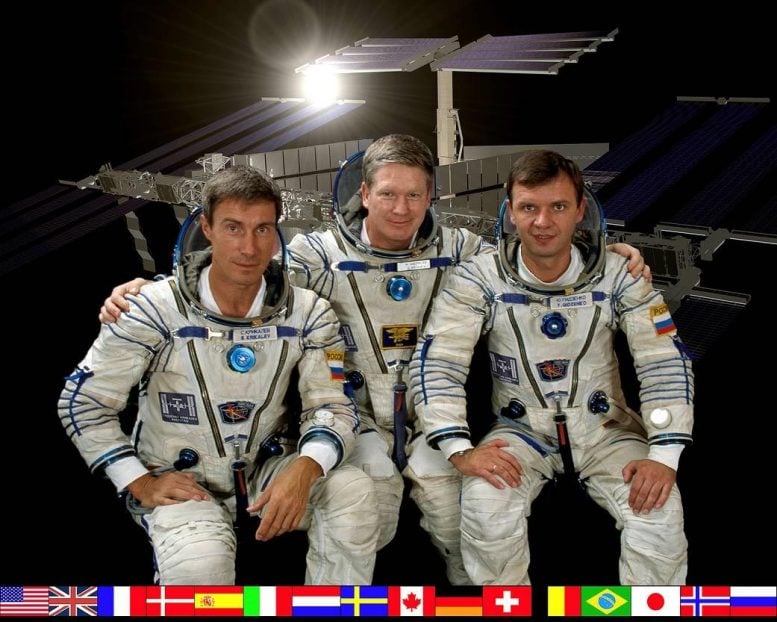
Official photo of the ISS Expedition 1 crew (left to right): Krikalev, Shepherd, and Gidzenko. Credit: NASA
This is the official portrait of the Expedition 1 crew, the first humans to live aboard the International Space Station. Arriving on station on Nov. 2, 2000, they were the first of 64 crews to live and work aboard the orbital laboratory.
During a January 30, 1996, press conference in Washington, DC, Vice President Al Gore and Russian Prime Minister Viktor S. Chernomyrdin announced the assignment of American astronaut William M. Shepherd and Russian cosmonaut Sergei K. Krikalev to the first team of crewmembers to occupy the International Space Station (ISS).
Shepherd had completed three Space Shuttle missions and Krikalev had flown two long-duration missions aboard the Mir space station as well as on STS-60, becoming the first Russian cosmonaut to fly aboard the Space Shuttle. At the time of the announcement, Shepherd and Krikalev planned to launch to ISS in May 1998 with a third crewmember, another Russian cosmonaut.
Initially, the Russians designated Anatoli Y. Solovyev, a veteran of several missions to Mir, as that third crewmember but they ultimately replaced him with Yuri P. Gidzenko, also a Mir veteran. The partners later announced a backup crew composed of veteran Shuttle commander Kenneth D. Bowersox, Mir veteran Vladimir N. Dezhurov, and space rookie Mikhail V. Tyurin.
For the past 20 years, the astronauts aboard the International Space Station have conducted science in a way that cannot be done anywhere else. Orbiting about 250 miles above our planet, the space station is the only laboratory available for long-duration microgravity research.








 个人中心
个人中心 我的培训班
我的培训班 反馈
反馈












Comments
Something to say?
Log in or Sign up for free